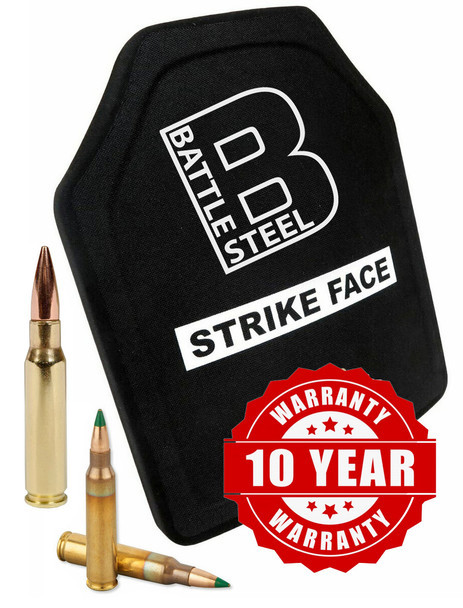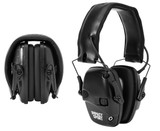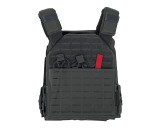Understanding Body Armor Plates: Materials, Protection Levels, and Usage
Introduction
Body armor plates are a critical component of modern personal protection systems, used by military personnel, law enforcement officers, and increasingly, civilians. These plates are designed to provide varying degrees of ballistic protection against firearms and other threats. This article will delve into the materials used in body armor plates, the different types and classes of protection available, and how civilians can select the right body armor for their needs.
Materials Used in Body Armor Plates
The effectiveness of body armor plates depends largely on the materials used in their construction. The most common materials include:
- Steel: Known for its high tensile strength and ability to stop a wide range of ballistic threats, steel plates are durable and relatively inexpensive. However, they are heavy and can cause fatigue over long periods of use.
- Ceramic: Ceramic plates are made from materials like alumina, silicon carbide, and boron carbide. These materials are lightweight and can effectively stop high-velocity rounds by shattering upon impact and dispersing the energy. However, they are more expensive and can be brittle, requiring careful handling.
- Polyethylene (PE): Ultra-high-molecular-weight polyethylene (UHMWPE) plates are among the lightest options available. They work by absorbing and dispersing the energy of the bullet. While highly effective against a range of ballistic threats, they can be thicker than other materials and are sensitive to extreme temperatures.
- Composite: Composite plates combine multiple materials, such as ceramics and polyethylene, to take advantage of the strengths of each. These plates offer a balanced approach to weight, durability, and protection.
Types and Classes of Protection
Body armor plates are categorized into different levels of protection based on their ability to stop specific threats. The National Institute of Justice (NIJ) in the United States sets the standards for ballistic resistance:
- Level IIA: Tested to stop 9mm and .40 S&W rounds fired from short-barrel handguns. This level offers the lowest protection and is rarely used in modern body armor.
- Level II: Designed to stop 9mm and .357 Magnum rounds fired from longer-barrel handguns. Offers a balance between protection and concealability.
- Level IIIA: Protects against .357 SIG and .44 Magnum rounds from handguns. This is the highest level of protection available for soft armor.
- Level III: Tested to stop 7.62mm FMJ (Full Metal Jacket) rounds, typically used in rifles. This is the entry-level for hard armor plates, providing protection against most commonly encountered rifle threats.
- Level IV: The highest level of ballistic protection, designed to stop armor-piercing rifle rounds like .30-06 M2 AP. These plates are used in high-risk environments.
Who Uses Body Armor Plates?
- Military Personnel: Soldiers in combat zones wear body armor to protect against rifle fire, shrapnel, and other battlefield hazards.
- Law Enforcement: Police officers, especially those in tactical units, use body armor to safeguard against firearms during operations.
- Security Professionals: Private security contractors and bodyguards wear body armor for protection in high-risk assignments.
- Civilians: Increasingly, civilians are purchasing body armor for personal protection, particularly in areas with high crime rates or for self-defense purposes.
Choosing Body Armor for Civilians
When selecting body armor, civilians should consider the following factors:
- Threat Level: Assess the potential threats in your environment. For general self-defense, Level IIIA may be sufficient, but for higher-risk areas, Level III or IV might be necessary.
- Comfort and Fit: Body armor should fit well and be comfortable to wear for extended periods. Ill-fitting armor can hinder movement and be less effective.
- Weight: Lighter armor is easier to wear but might be more expensive. Consider how long you will need to wear the armor and balance weight with protection.
- Concealability: Some civilians prefer armor that can be worn discreetly under clothing. Soft armor is generally more concealable than hard armor plates.
- Budget: Prices vary widely based on the materials and protection level. Set a budget that reflects your needs and the level of risk you are mitigating.
Why Civilians Might Need Body Armor
Body armor provides an added layer of security for civilians concerned about personal safety. It can be particularly useful in:
- High-Crime Areas: Residents or business owners in areas with high rates of violent crime may feel safer with body armor.
- Protests and Public Events: Participants in events where there is a potential for violence can use body armor as a precaution.
- Personal Defense: Individuals who feel threatened or have specific concerns about personal safety can benefit from the added protection.
Conclusion
Understanding the materials and protection levels of body armor plates is essential for making an informed decision. Whether for military, law enforcement, or civilian use, selecting the right body armor involves considering the threats, comfort, weight, and concealability. By making a well-informed choice, users can significantly enhance their personal safety and peace of mind.
Recent Posts
-
Understanding Ballistic Shield Ratings and Their Applications
The Trusted Name in Tactical Defense - BattleSteel® When it comes to protecting those who protect us …2025-04-19 -
The Importance of Hearing Protection in Tactical Environments
The Legacy of BattleSteel® BattleSteel® is a trusted name in the world of tactical defense equipment …2025-04-14 -
How to Properly Fit and Wear a Plate Carrier
About BattleSteel and Their Mission BattleSteel is a trusted name in the tactical gear industry, ren …2025-04-11



